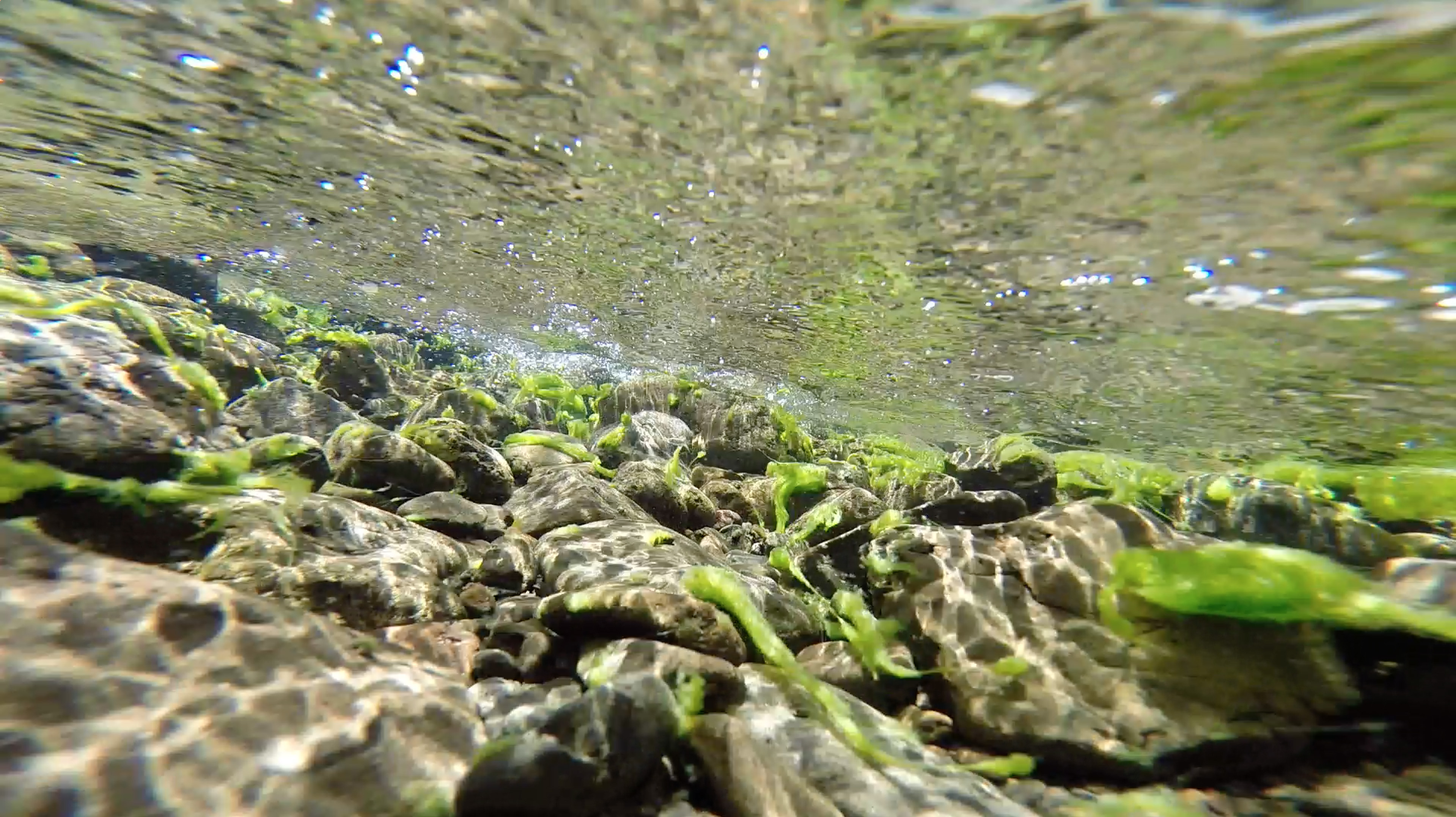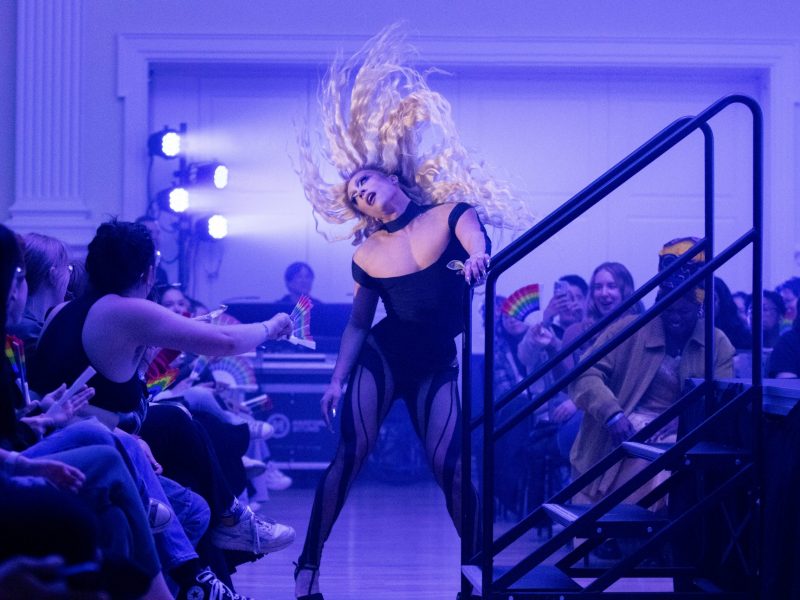Throughout the Hawkeye State on Monday, grangers and greengrocers, salesmen and students, pundits and poets alike caucused in what would go on to become — as the hours passed and the CNN anchors faded — one of the most exciting Democratic openers in recent history.
The caucuses, more so than their conventional primary colleagues nationwide, offer opportunity for dialogue, whether from campaign precinct captains lecturing in church basements and civic halls across Iowa or from the Democratic voters repeatedly milling about within them. (The Republicans, alas, use a more conventional secret ballot.)
How fitting, then, that the first tangible evidence of a newly minted partnership between this university and Washington’s Phillips Collection explores hot political topics in direct, often provocative dialogue that attempts — with beautiful results — to find the signal in the noise.
The latest offering from the Phillips’s Intersections series (which strives to pair active artists with collection highlights and gallery architecture) offers works by Helen Frederick, an artist and George Mason University printmaking professor. Frederick’s pieces on view include sculpture, video installation and works on homemade paper.
Titled “Acts of Silence,” the two-room show explores natural and political themes in conversation with works by the late Morris Graves. Aside from a central sculpture, Weather Prediction Instruments for Meteorologists, the Graves works provide welcome context but seem like curatorial afterthoughts when placed higher on walls.
Perhaps they are not afterthoughts, but references long thought forgotten, brought to the back of one’s mind as Frederick deftly discusses them in her new pieces.
The first room is an exercise in serenity, clearing one’s mind for a fresh look at ideas that all too often spark gut reactions: war, loss, death, drones and the environment, among others.
Fragmented-yet-whole thoughts like these rain across a video installation that splashes tranquil scenes of the California redwoods across two cater-cornered walls. Frederick’s calming voice reads off the word droplets as they fall, but her narration is only audible from directly underneath a dome speaker in the room’s center — one has to encounter it to listen.

Situated on a round, trunk-like form of homemade paper, “Extinguish” explores themes of drone warfare with a neighboring work. (Image courtesy of the Phillips Collection and the artist)
A blood-red and bone-white Graves painting of a wounded gull parleys with images and reliefs of drones joined by the word “EXTINGUISH.”
The use of rough-yet-elegant handmade paper might seem like an uncalled-for application of the tree metaphor, but its masterful execution — round, trunk-like shapes; striated, bark-like textures; even the flotation style of hanging — bespeak a unique natural discourse that is all too welcome.
Upon entering the second gallery, one is hit by a cool breeze of air. Whether intentional to symbolize wind or simply a conveniently coincidental vent, the effect is one of total immersion.
Similar sensory immersion is core to another fantastic new Phillips show, “Seeing Nature: Landscape Masterworks from the Paul G. Allen Family Collection,” set to open Saturday.
In the second gallery, Frederick’s works are best viewed first from afar. They seem to show treelines at sunrise or sunset, a green field lined by forest on a moonlit night or even a roiling sea in yellow thunder. Interpretations could drastically vary, one is most definitely assured.
Up close, they transmute to swaths of color, reinforcing the theme of basic essentials and an almost zen-like universality.
The works interact remarkably well with Graves’ watery, slight compositions of seabirds.

“Phenomenal Space” is best viewed first from afar, to interpret the shapes in myriad permutations, then up close to realize that color is universal. (Image courtesy of the Phillips Collection and the artist)
The star of the room is Graves’ Weather Prediction, a sculpture resembling a dissected kaleidoscopic submarine of sorts, with coral-like forms, blue glass and a standalone brass propeller to boot.
It is paired head-on with a similarly shaped Frederick work that projects video scenes of forests, nature and even war (reminding viewers of gallery one) onto a glass disk decorated with glittering, tree ring-like furrows.
The final Frederick, Moon Over The Lake, is geometric and crowded, negotiating the industrial and the sublime.
This idea of dichotomous discussion — industrial yet sublime, rough yet elegant, fragmented yet whole, afterthought yet absolute core — recalls the idea of Intersections itself: to pair and discuss. It is especially prescient at the onset of this Phillips/university partnership, a dyad of two opposite-yet-cohesive entities.
The show’s title, Acts of Silence, is as much a description as it is a commandment. These lovely works ought to be enjoyed, contemplated and walked among in peaceful, quiet perfection. Let the art do the talking, if you will.
Admittedly, this sort of immersive, thought-provoking show might seem more at home in a white-walled, hermetically sealed chamber as has become the standard of contemporary art.
But perhaps the trappings of old Phillips — dual antique fireplaces, tired-yet-dignified chairs, molding — force one to not totally suspend one’s disbelief.
We are taken to the forest only fleetingly, sent back to bring the show’s tranquility to others. It is an ingenious hallmark of the Intersections series to force such introspection only to demand reaction as well.
So what do we bring from it to the world? Perspective, one hopes, and perhaps even a little bit of quietude.
If that’s not a lesson to take into the New Hampshire primaries, this registered voter isn’t quite sure what is.
Helen Frederick: Acts of Silence runs at the Phillips Collection in Dupont Circle, with free admission for university students, through May 1.



